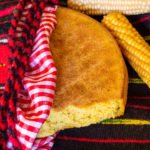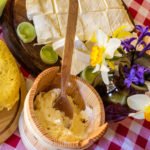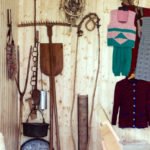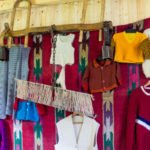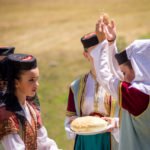- /
- What Are Katuns?
- /
- The Customs and Traditions...
The Customs and Traditions in Katuns
Katuns in Montenegro are a real, alive treasury of numerous customs and specific culture and traditions preserved from the old times till today. The way of life in katun impacted, and does so today, a number of other things such as gastronomy, activities related to leisure and entertainment. What is most interesting is a very close relationship and co-existence of man and nature which is impossible to see in urban areas. It is this exposure to nature that influenced certain habits and customs to form, unique to katuns.
Gastronomy
Distance of katuns and inability of farmers to frequently go and get groceries in villages have influenced katun gastronomy to center around those ingredients that are produced in katuns, or can be collected in nature around them. In both cases, ingredients are of high-quality, completely natural and unpolluted, which is a genuine rarity in the 21st century and it gives this type of cuisine a tremendous value.
Locals bring with them or regularly get only wheat and corn flour, salt, oil, sugar and coffee. Cattle breeding means that families enjoy the abundance of dairy products, and it is these products that represent the backbone of most meals in katuns. Some of the famous dishes are kacamak (a dish made of wheat or corn flour, potatoes and cheese), kukuruza (traditional corn bread), gotov or cicvara (melted cheese and cream cooked with corn flour), priganice (fried bread dough), beans or potato stew, and even simple boiled or roasted potato with mountain cheese and cream has a special taste here. A home-made bread, of locally produced flour, that used to be baked directly on hotplate and on embers, and today is baked in that famous firewood stove ‘ciganac’, when served warm along with cheese and cream is unusually tasty and all the guests who come from abroad regularly mention it. Meals in katuns have abundance of calories, in order to provide energy needed to all family members who over the day have numerous and exhausting tasks to handle. Especially delicious dish you can find in mountains only is called koprive or skrob, and is made from nettle collected in the mountain, or zeljanica, a pie made of wild spinach also collected in nature. Sheep and lambs are rarely slaughtered for food, because in katuns it is hard to preserve raw meat, but this is done only when farmers know that all the meat will be eaten quickly – when the great works such as mowing and hay collection are done and the whole extended family and friends come to help, or during mountain fairs when katuns are full of guests from all sides. A particular delicacy in katuns is lamb roasted on a spit, which takes half a day to prepare, but when it is finally done you understand that it was worth your while to wait.
Even all the drinks here are home-made. Juices and liqueurs are made from pine cones, pine needles, elder tree flowers, wild strawberries, blueberries, raspberries, blackberries. Tea is never purchased, locals collect various medicinal and aromatic herbs, dry them, mix them to their preference and prepare perfect hot beverages. Sweets are rarely prepared here, today people buy them when they can, and still keep them to serve the guests. What children in past used to do for refreshment while herding was taking the snow from still frozen heaps of snow that in mountains can be found even in summer, sprinkle it with a little bit of sugar, and milk a sheep directly over it all. The children used to call this katun ice-cream.
Games
At old times katuns were full of life, a lot of grownups, youth and children were here, all of whom had their ways of entertainment. There are many poems and songs that were designed and sung in katuns, with gusle (national instrument in Montenegro) or without it. Children had their special games – goats or ring (hide and search for rings), hen (group game involving both adults and children), float (when you need accuracy to throw a stone at a particular place) and the like. Young people had their games, male and female, male usually related to competitions in strength or skills, and female games were for fun. They regularly organized ‘sijelo’, gatherings, where they danced and sang, mostly in the evenings. And the most important events in katuns were fairs, organized on different dates in different mountains, usually around St. Peter’s or St. Elia’s day, and they were very well attended. In katun or on mountain where these fairs were held the whole family would gather, relatives and friends would come, along with people from the other katuns. This is a tradition that is still kept, though to a lesser extent, and in many katuns you can still see unusual crowds of people on fair days.
Handicrafts
To make use of the time, and to create something that they don’t have to buy, both shepherds and their wives are skilled to make beautiful things with their own hands. Women generally work with wool, they spin wool and knit famous woolen socks called ‘bjelace’, vests and sweaters, hats and scarves. These are the things that are most needed by the family members. And if there is enough time and skill, then they also crochet and embroider. At past times they used to weave, they would make carpets and blankets and woven bags called ‘dzaklje’ that can still be seen in the mountains, but women who make them are really rare. Men are generally skilled with wood, and in katuns they will often tell you that they have built their huts with their own hands. And some of them make various other things – wooden barrels used for cheese, wooden dishes for cream, canes used by almost all shepherds, and sometimes even ‘frula’, a traditional flute, or gusle, if they are really skilled. Even today you will often see shepherds in the meadow, carving wood while following their herds.


